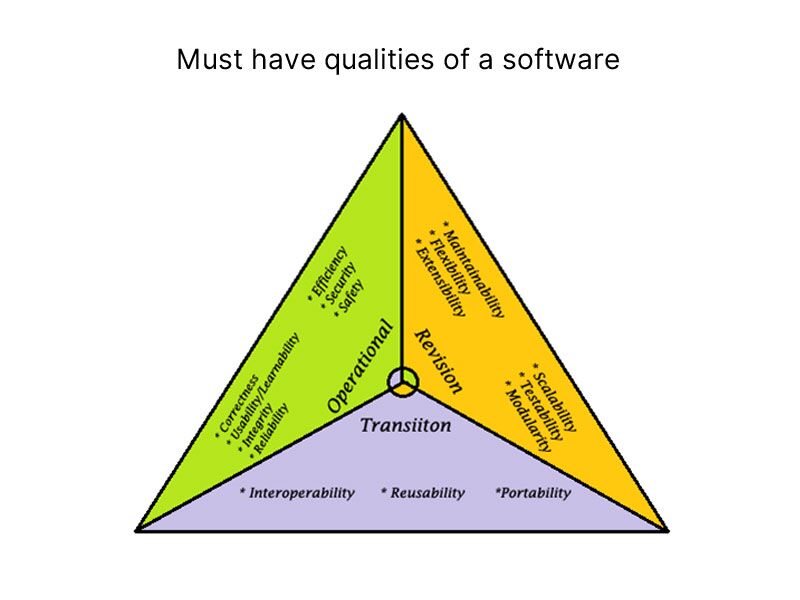Software companies are constantly vying with one another to provide their clients with improved iterations of their software. Software quality is becoming more critical as mobile applications get more complicated and target consumers become more demanding and discerning about even the most minor errors.
The emphasis placed during the development phase on the assurance of IT platforms enhances CX, boosts user loyalty, & helps organizations compete effectively in the post-pandemic period.

However, quality had been sacrificed in favor of rapid delivery, which is a clumsy delivery technique that nearly always results in more significant confusion down the road. Traditional testing methods could significantly delay the development and commercialization of new software.
This is why DevOps and QAops testing methods are becoming increasingly popular among enterprises. But which is the right one for your enterprise?
Keep on reading because, in this article, we have delved deep into the advantages, challenges, and differences between DevOps and QAops testing.
First, let’s become familiar with both terminologies.
QAops Testing
QAOps is the process of incorporating quality assurance (QA) into the CI/CD workflow. The QA team must work collaboratively with the engineering team as well as the ops team. Providing the testing group with a more significant role in the development process requires deploying QAOps. CI/CT/CD forms the basis of the QAOps methodology (i.e., continuous integration, continuous testing, and continuous delivery.
It might be a little challenging to comprehend QAOps from a description alone. Knowing how it could be applied in software development will help you grasp it properly.
QAOps Testing Process:
The following are some advantages that can be achieved by putting the QAOps approach into practice.
- The costs tothe client are reduced since the QA team is always learning new techniques and becoming more productive and efficient.
- The development, operational, and QA teams may work together thanks to the QAOPs architecture. Additionally, it gives you the chance to develop new skills.
- Given that the QA, development, and operations teams clearly understand the testing procedure, the QAOps approach enables you to address defects more quickly and deliver the product sooner than scheduled.
- A dependable product can be produced because of CI/CD testing’s ability to identify mistakes upfront.
- Due to improved reliability and effectiveness, following QAOps testing increases the likelihood of enhanced customer experience.
Challenges faced in QAOps Testing
Any new method or technique has its first set of problems. The QAOps procedure is no different. The following is a list of typical difficulties that QAOps teams encounter.
- For the staff of the Quality Assurance team staff, learning emerging technologies and all the stages of an SDLC is too challenging.
- It is a time-consuming and costly procedure.
- To address different facets of the application performance life cycle, enterprises must spend on the appropriate technologies and resources.
DevOps Testing
Greater software agility and efficiency are now required due to advancements in software development over time. By introducing a comprehensive strategy to the end-to-end deployment lifespan, DevOps offers the response to all these needs. DevOps is not simply a technique or procedure; it denotes a fundamental change in the software development process with a significant emphasis on agility, teamwork, and automating inside IT and programming team dynamics.
DevOps Testing Process:
The following are some advantages that can be achieved by implementing the DevOps approach.
- The software can be delivered continuously and more quickly thanks to the automatic & continuous testing procedure.
- The software development process includes testing at every level (SDLC).
- Various testing methods are used during each stage of the SDLC. In the event thatan issue is discovered, this reduces the amount of backtracking.
- A Single department is no longer solely responsible for testing. Everybody can comprehend the effects of each change when testing tasks are distributed.
Challenges faced in DevOps Testing
- Today, automated testers are heavily relied upon, raising costs.
- Business requirements and functionalities are not covered by DevOpstesting.
- Longer response times might destroy DevOps projects due to the absence of user-friendly alternatives for manual testing when creating automation scripts.
3 Major differences between DevOps and QAOps
| DevOps | QAOps |
| Programmers and management will play key roles, with quality assurance working as a subset of development. | QA experts’ major tasks involve close collaboration with Programmers and Operations. |
| Emphasize the need for rapid software deployment. | More emphasis is placed on guaranteeing software quality. |
| The application is going to be of standard. | The application is going to be of excellent quality. |
Summing Up
Now that you know the advantages and challenges of both testing methods, it’s time to choose the one that best suits your business needs. For this, outsourcing software testing can be a good choice for you. With Netsmartz, you can establish concrete control over your product or software’s functioning and usability by ensuring a high-performance, bug-free experience for your customers.
We offer:
- Full Suite of QA Testing Services
- Solid Expertise & Experience
- Combine Security and Usability Outcomes
- Tailored QA per Software Specifics
- Latest Practices and Technologies
Summary
Kickstart Your Project With Us!
Popular Posts
CONTACT US
Let's Build Your Agile Team.
Experience Netsmartz for 40 hours - No Cost, No Obligation.
Connect With Us Today!
Please fill out the form or send us an email to

